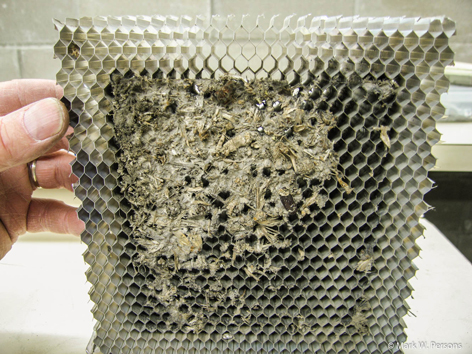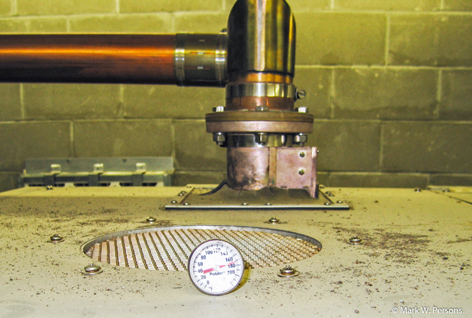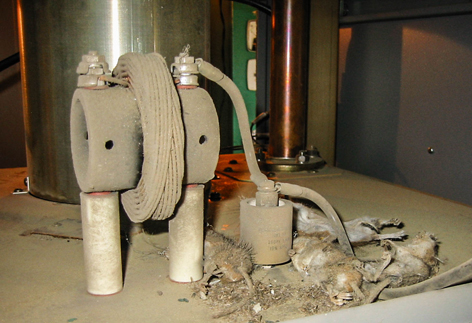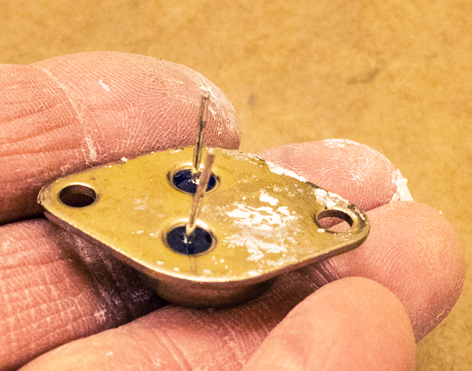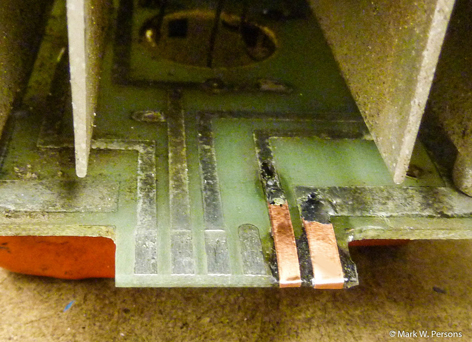|
When you find a circuit breaker that has failed open, it is improper to bypass it with a jumper wire.
Instead, use a fuse in place of a breaker on a temporary basis. After all, the breaker was there for a reason: to protect wiring and circuits from catastrophic failure! Inline fuse holders are great for fuses up to 20 amperes. I've soldered wires to larger fuses when a fuse holder was not available. Attach a paper note on or near the breaker handle, indicating to leave the handle down and that a fuse is being used instead on the back side. Remember, this is a temporary fix until a replacement breaker is installed. Also, when you make a change or have information that might be helpful in the future, make a notation in the equipment manual. Do not use an ink pen, use a pencil so you can erase the note, if the change you make doesn't work out as planned. AIR PRESSURE SWITCHES One of the most common problems in a transmitter is an air pressure switch that won?t let the transmitter run, even when the cooling fan is working. Those switches were put there for a reason. They protect the transmitter from lack of cooling. We know that all blower motors eventually will fail from bearing or electrical problems. That is why transmitters are protected from catastrophic failure by air flow or air pressure switches. Bypassing a switch leaves the transmitter open to serious problems when the blower does quit entirely. The cost can be very high, not to mention the bad reputation you might get for doing the wrong thing.
Don't assume that the air pressure or air flow switch is bad when it might be trying to tell you there is a real problem. Check the air path before making any attempt to recalibrate an air switch. The metal honeycomb air filter in Fig. 2 is a common example of how airflow can be restricted due to lack of maintenance. Use a mirror to examine the air holes to verify all is well. Airflow is also often reduced by dirty blades in squirrel cage fans. The cupped blades fill with dirt, thus reducing fan efficiency and allowing transmitter component temperatures to rise. I typically use a flat screwdriver to scrape dirt away. Check the transmitter's instruction manual for a procedure to set air flow or pressure switches. Lacking good directions, my approach is to adjust an air sensor so the transmitter air light shows normal when the blower is running and the high voltage is off. Then open a PA cabinet door about 1 inch. The air light should go out. Adjust as necessary to get it right. Test it several times. I recommend doing this whenever you replace a tube in a transmitter. It just takes a couple of minutes to save a major headache and expense later. CHECK THE TEMPERATURE
Fig. 4 shows a thermometer on the air output port of a transmitter. It is just one more performance indicator like a voltmeter, ammeter or power output meter. I typically use an inexpensive Taylor brand zero to 220 degree F thermometer. They are available in the cooking utensil department of many local stores for under $10. My recommendation is to purchase two thermometers for each transmitter. Use one at the transmitter's air inlet and one at the air outlet. The temperature difference should stay constant. Incoming will likely be cooler in the winter and warmer in the summer. Just add the normal difference to find what the output stack temperature should be. Look in the transmitter's instruction manual or check with the manufacturer for normal heat rise across the transmitter at the power level it is running. Don't be surprised if the temperature differential on a 20 kW FM tube transmitter is 100 degrees F. Make notes on what temperature is normal and use the thermometer as one of the many readings you take at the transmitter site on a regular basis.
MICE IN THE BUILDING You've seen it before. Dead mice in the high voltage section of a transmitter. Remember, you could be just as dead if you touch high voltage! Use a high voltage shorting stick, as I described in an RW article in April 2016 (radioworld.com, key term arc gaps). You will be surprised and still alive when a loud flash and bang happen on a circuit you just shorted to ground and thought was dead. Safety first! Do your best to keep mice out of a transmitter building by plugging any openings as little as 1/4 inch wide. Mouse traps, in my opinion, are a Band-Aid for the problem. Keep the mice out, so you don't have to clean up their messes afterward. Scout out and cover any openings that can invite mice and other critters. SOLID-STATE STUFF When checking a diode, don't assume that failed diodes always short. Yes, that is the most common failure mode, but they can fail open.
Case in point: a Collins 5 kW AM transmitter that would not turn on. The problem was an open steering diode in the logic circuit. A glass-cased diode opened after 40 years of age and temperature cycling. It happens! A similar situation occurs with transistors. I often find open or ?no gain? transistors in the exciter of Continental 315F/ 316F 5/10 kW AM transmitter. Checking for shorts with an ohmmeter does not find the bad ones. Harris MW-1 AM transmitters have a similar problem. I use a Sencore TF-46 Super Cricket Transistor & FET Tester. With it, I check for leakage and even match transistors for gain in the RF section of a module for best performance. Heat sink compound is used to help transfer heat from a transistor to the heat sink it is mounted to. More is not better. Best to put a bit on and rub it around so there is a thin layer on the transistor before it is bolted down. The photo shows the white compound on transistor leads. Bad choice! Keep the leads clean so they can make good contact with the socket they mate with.
Fig. 7 shows just the opposite. Too little heat sink compound. In either case, the transistor will likely run hotter than it should and will fail early. Heat the bane of semiconductors. Many radio broadcast engineers have worked with the Harris MW-1 AM transmitter. There are 12 output modules, each of which plugs into a circuit card edge connector. You need to not over-tighten the mounting screws that hold the module in place but make sure they're snug. They also provide an RF ground to the module. If you forget, RF current will attempt to flow through the socket, then burn the edge connector and socket it plugs into. If the damage isn't too great, the circuit card can be repaired using copper tape over the burned connector, as shown in the photo. By the way, you are caught in the middle on this one. Over-tightening the module screws will strip them out of the threaded aluminum sheet they go in. Just use common sense and don't overdo it. On a related matter, I learned from a factory representative years ago that the transmitter will have about one module failure per year. That is normal. Losing more is likely a symptom of other problems. It makes perfect sense to think these things through before jumping into mistakes. By the way, there is a free audio version of my father's book, "Where Have All the Broadcasters Gone" available on my website at: http://mwpersons.com/books. Comment on this or any article. Write to radioworld@nbmedia.com. |





